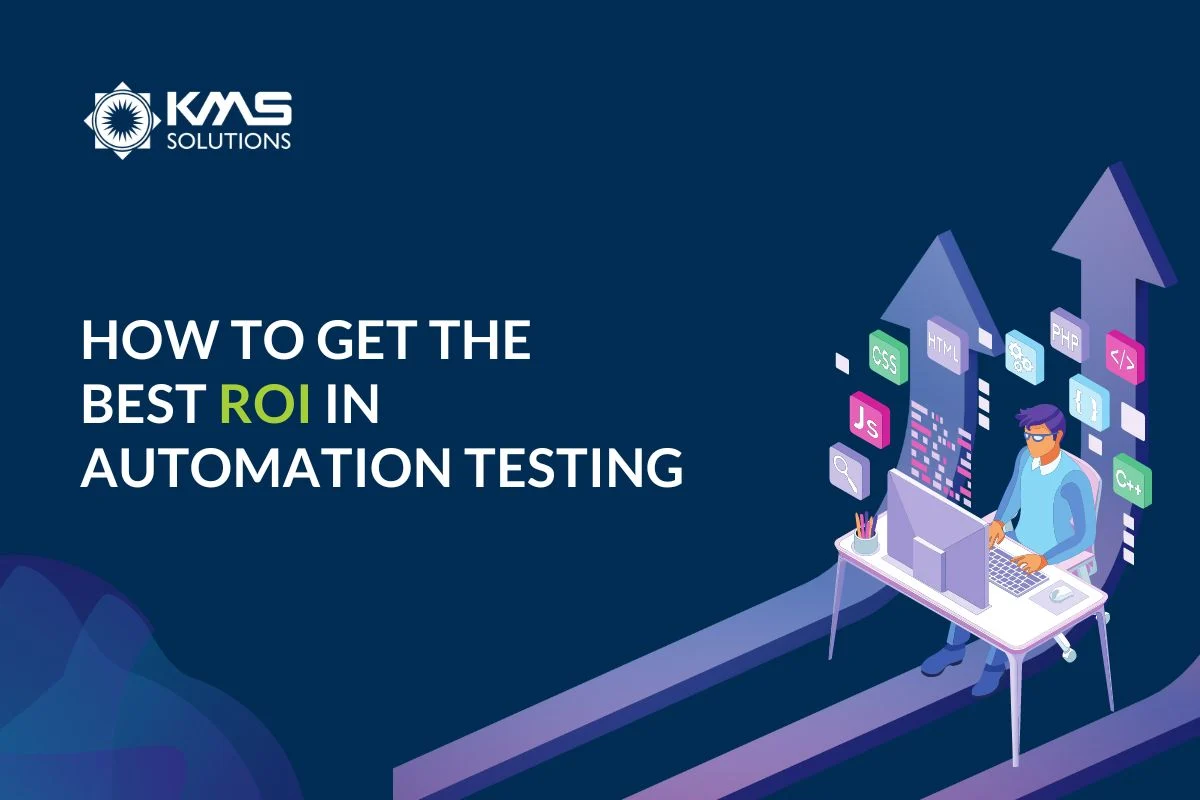Automation testing has gained tremendous traction in recent years as a key enabler of Continuous Delivery and Agile software development. The approach is believed to increase efficiency, improve quality and reduce the time taken for development and testing.
Well, not all test automation projects can deliver the expected success and ROI. Despite its widespread adoption across various industries, only a few organizations have been able to leverage the benefits of test automation fully. In reality, test automation fails to meet expectations 64% of the time, as per Cigniti.
It’s clear that developing automation for testing is not an easy path. It takes time, a well-thought-out strategy and dedication to maximize testing efforts.
In the following section, let’s explore some considerations to help you make the most of test automation investments.
Define test automation scope
The first and foremost thing when commencing an automation initiative is determining the appropriate test scenarios for automation. Without a comprehensive analysis of automation feasibility, there is a risk of automating test scenarios that cannot be executed during subsequent test cycles, which may impede the project’s intended outcomes.
It’s essential to consider various factors, such as the functional characteristics of the app under test, the environment, hardware dependencies, potential impacts and more, when determining what to automate.
Here is a simple yet effective framework that can help us identify:
- Whether a test case should be automated or not (Automation Scope)
- The order in which test cases should be selected for automation (Priority Order)
This 2×2 matrix categorizes the test cases based on two factors:
- Business Criticality (x-axis)
- The frequency of execution through the software’s lifecycle (y-axis)

For each test case, ask yourself the following questions:
- What is the Business Criticality of the test case?
- What is the execution frequency of the test case throughout the life cycle of the product?
Based on the answers to these two questions, which must be either ‘High’ or ‘Low’, we will categorize the test cases into one of the four quadrants depicted in the 2×2 matrix above. We will eventually have four groups of test cases assigned to four quadrants as follows:
- Quadrant 1 – High business-criticality and high repetitiveness – test cases falling into this quadrant will produce the most substantial positive ROI for automation and benefits
- Quadrant 2 – Low business-criticality and high repetitiveness – test cases in this quadrant will offer a positive ROI for automation, but the business impact of automation will be minimal
- Quadrant 3 – High business-criticality and low repetitiveness – test cases appearing in this quadrant will provide us with a low automation ROI and may be retained as manual regression test cases or should be completed after the previous two cases.
- Quadrant 4 – Low business-criticality and low repetitiveness – test cases in this quadrant will result in negative ROI and should not be included in automation or the manual regression package.
Emphasis on test design
Focusing on the right test design is crucial for maximizing the ROI of test automation. Effective test design should aim to achieve comprehensive code coverage with minimal tests within a short timeframe.
Once the scope of automation is established, you need to review all the functional and non-functional requirements of the software to ensure maximum test coverage. This involves creating comprehensive test cases to identify the expected test execution time and potential defects. Furthermore, this process can help to spot additional scenarios and workflows that may have otherwise been overlooked and can be automated.
Select the proper automation framework
An automation framework offers a set of predetermined guidelines, protocols, rules and standards for automation testing. By adhering to these guidelines, a team can increase testing speed and efficiency, improve testing accuracy, reduce test maintenance costs, and lower risks.
A practical test automation framework should be able to:
- Ensure consistency in testing
- Enhance test structuring through refactoring
- Use minimal code
- Require less code maintenance
- Improve the reusability of test scripts
- Allow non-technical testers to be involved in code
- Reduce the training period for using test scripts
- Incorporate static or dynamic data where appropriate
High-quality Test Data
As software development methodologies have evolved to prioritize faster and more frequent releases, having access to high-quality test data has become incredibly important. Data size should be optimal and contain all relevant information and components needed for the specific application being tested. Additionally, various data sets must be sorted and labelled according to their relevance, such as valid or invalid data and boundary conditions. Evaluating and updating data regularly is crucial to avoid using outdated test data and ensure it remains valid for testing purposes.
Test Maintenance
It’s essential to consider product evolution to guarantee the longevity of the automation solution. Given the need for frequent iterations and updates to products, businesses should employ a test automation tool that entails reusable test cases and test plans, with smaller and more self-contained test cases replacing a monolithic testing architecture. Creating test suites that allow for periodic modifications is vital for routinely examining the testing suite’s maintenance requirements.
Test Automation Implementation
The success of automation testing relies heavily on the ongoing execution of automation scripts by the functional testing team. To accurately evaluate the effectiveness of these scripts, the team must possess functional knowledge.
Producing numerous scripts is pointless if they cannot identify critical bugs in the system. Therefore, investing in training and skill development is necessary to enhance the effectiveness of automation testing efforts, regardless of the automated testing tool you adopt.
By providing the testing team with the necessary training and skills, businesses can ensure that their automation testing efforts produce accurate results. This not only improves the quality of the software product but also saves time and costs in the long run.
Key Takeaways
Automation testing tremendously benefits businesses, from accelerating development time to enhancing software quality. However, companies are unlikely to maximize the ROI from their automation testing efforts without suitable approaches and practices.
Effective automation testing involves considering factors such as test designs, scope, data, frameworks, maintenance, and training. By carefully addressing these factors, businesses can improve the effectiveness of their automation testing projects.
If you’re considering transitioning to automation testing but have yet to know where to start, seeking expert help can be valuable. With over 13 years of experience, our experts have the skills and expertise required to assist you in developing effective strategies tailored to your business, reducing the risk of automation failure.










